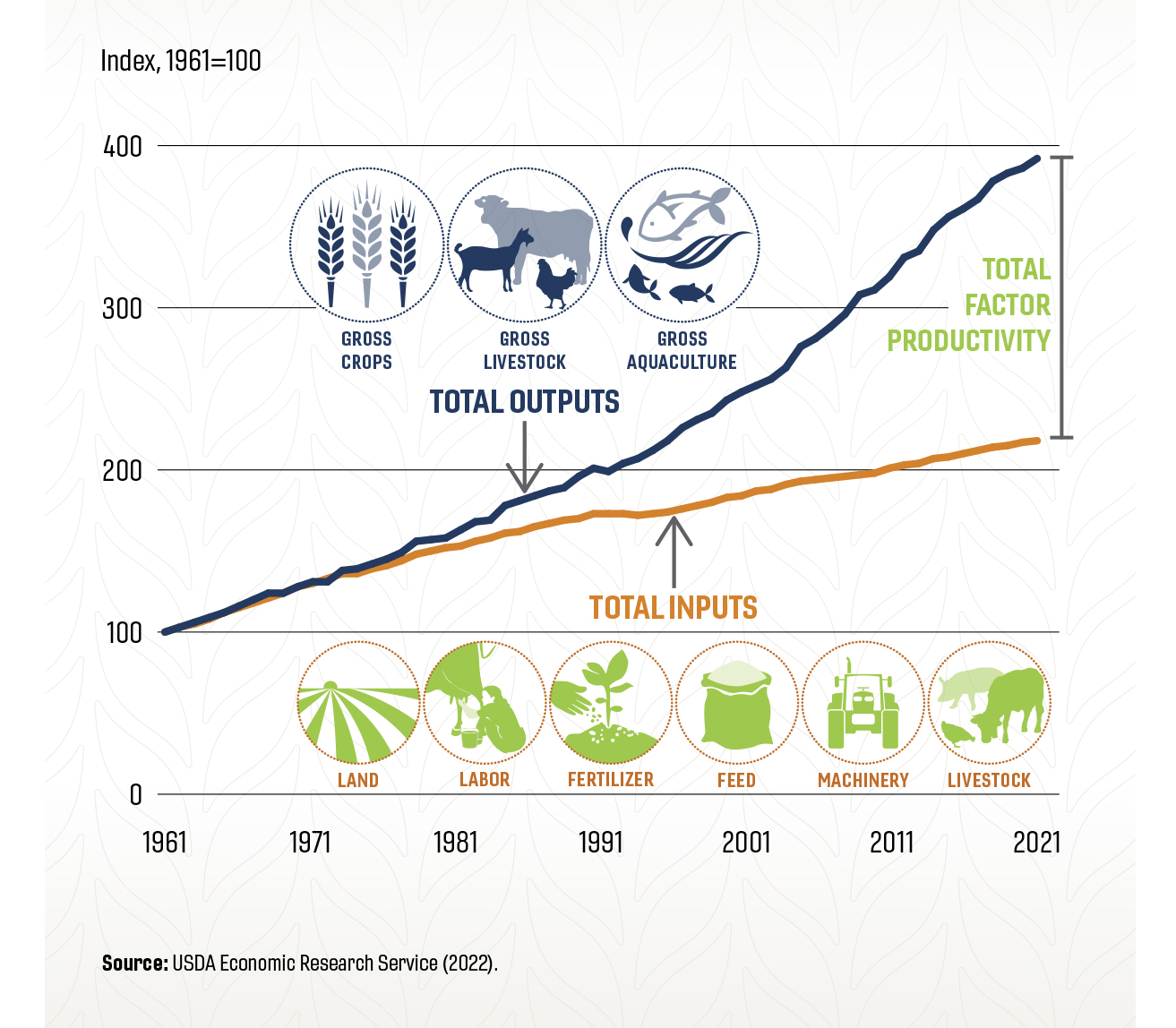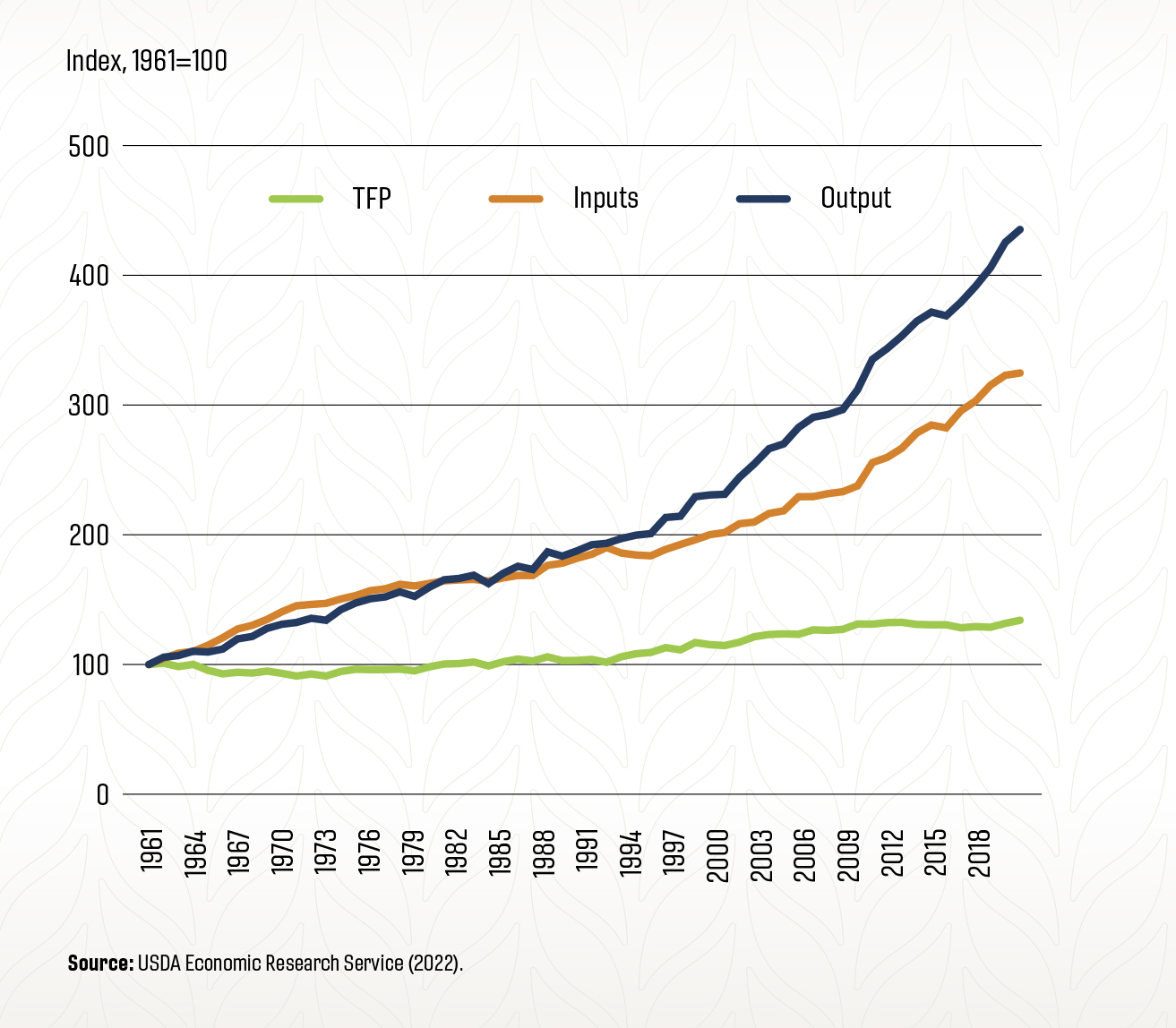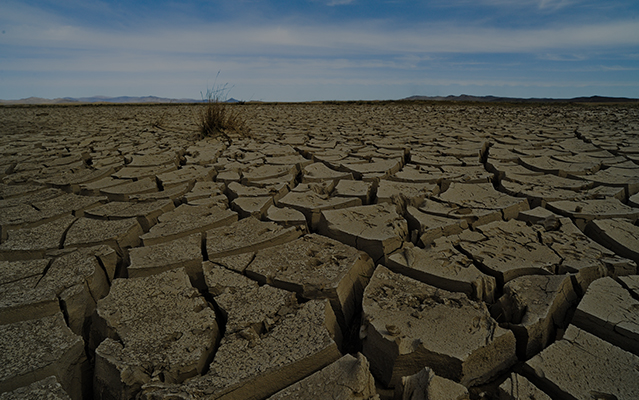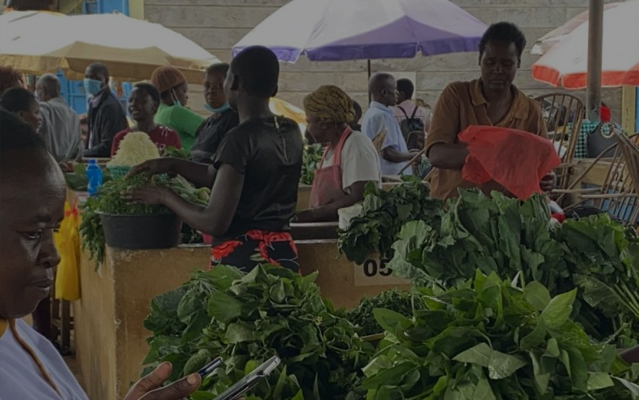Troublesome Trends in TFP Growth
Agricultural productivity will be the linchpin of strengthening the world’s agricultural systems in the next decade. It increases producers’ incomes, can lower consumer costs, and reduces the environmental impact of food and agricultural production.
Agricultural productivity growth, measured as total factor productivity (TFP), increases when producers increase their output of crops, livestock, or aquaculture products, using the same amount or less land, labor, capital, fertilizer, feed, and livestock (Figure 1).
In other words, TFP rises when producers utilize innovative agricultural technologies to increase output with the same amount or fewer resources. For example, healthy animals produce more meat so that the farmer can increase their output without additional animals. By combining precision equipment, data analytics, and advanced seed varieties, producers know when to plant, where every seed is located, and the exact amount of fertilizer or crop protection products needed in every section of the field.
Since TFP incorporates a range of inputs and outputs in its calculation, it is “the broadest available measure of technical efficiency and productivity over time” (Fuglie & Steensland, 2022). As a result, tracking changes in TFP reveals a great deal about agricultural systems.
Global Agricultural Productivity Index Slowing Productivity Growth



 First
First








